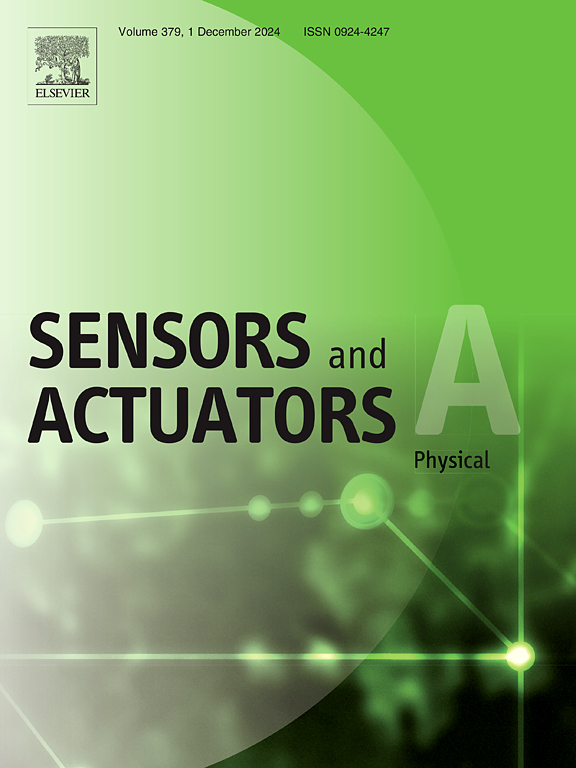A simple and extremely-sensitive non-invasive coupled-line microwave sensor for biomedical monitoring applications
IF 4.9
3区 工程技术
Q2 ENGINEERING, ELECTRICAL & ELECTRONIC
引用次数: 0
Abstract
This paper presents a novel and extremely sensitive microwave sensor based on a coupled-line microstrip configuration. The proposed design offers a simple yet effective method for measuring and analyzing the dielectric properties of liquids, specifically tailored for biomedical monitoring applications. A glass capillary tube, serving as a sample holder, is strategically positioned above the coupled-line to exploit the region of strong electromagnetic field concentration. When liquid samples with varying relative permittivity flow through the capillary tube, their interaction with the electromagnetic fields induces noticeable shifts in the transmission zero. The sensor, measuring 80 × 21 × 0.787 mm3, is fabricated on a low-loss moderate-cost Rogers RO4003 substrate. Its performance was experimentally validated using water-ethanol mixtures and real blood samples, demonstrating a sensitivity of approximately 5.4 at a frequency of 6.75 GHz. Experiments were also conducted using real human blood samples under fasting and non-fasting conditions. A strong correlation was observed between the simulated and measured results. The sensor offers several key advantages, including a simple structure, ease of fabrication, tunable operating frequency, seamless integration with other circuit systems, non-invasive operation, cost-effectiveness, and reusability of the capillary tube. These features make it a highly promising solution for diverse biomedical sensing applications.
一种用于生物医学监测应用的简单且非常敏感的非侵入性耦合线微波传感器
本文提出了一种基于耦合线微带结构的新型高灵敏度微波传感器。提出的设计提供了一种简单而有效的方法来测量和分析液体的介电特性,专门为生物医学监测应用量身定制。一根玻璃毛细管作为样品支架,战略性地放置在耦合线上方,以利用强电磁场浓度区域。当具有不同相对介电常数的液体样品流过毛细管时,它们与电磁场的相互作用引起传输零点的明显变化。该传感器的尺寸为80 × 21 × 0.787 mm3,采用低损耗、中等成本的Rogers RO4003衬底制造。采用水-乙醇混合物和真实血液样品对其性能进行了实验验证,在6.75 GHz频率下的灵敏度约为5.4 MHz∆εr '。在禁食和非禁食条件下,使用真实的人类血液样本也进行了实验。在模拟结果和测量结果之间观察到很强的相关性。该传感器具有几个关键优势,包括结构简单、易于制造、工作频率可调、与其他电路系统无缝集成、非侵入性操作、成本效益和毛细管可重复使用。这些特点使其成为各种生物医学传感应用的一个非常有前途的解决方案。
本文章由计算机程序翻译,如有差异,请以英文原文为准。
求助全文
约1分钟内获得全文
求助全文
来源期刊

Sensors and Actuators A-physical
工程技术-工程:电子与电气
CiteScore
8.10
自引率
6.50%
发文量
630
审稿时长
49 days
期刊介绍:
Sensors and Actuators A: Physical brings together multidisciplinary interests in one journal entirely devoted to disseminating information on all aspects of research and development of solid-state devices for transducing physical signals. Sensors and Actuators A: Physical regularly publishes original papers, letters to the Editors and from time to time invited review articles within the following device areas:
• Fundamentals and Physics, such as: classification of effects, physical effects, measurement theory, modelling of sensors, measurement standards, measurement errors, units and constants, time and frequency measurement. Modeling papers should bring new modeling techniques to the field and be supported by experimental results.
• Materials and their Processing, such as: piezoelectric materials, polymers, metal oxides, III-V and II-VI semiconductors, thick and thin films, optical glass fibres, amorphous, polycrystalline and monocrystalline silicon.
• Optoelectronic sensors, such as: photovoltaic diodes, photoconductors, photodiodes, phototransistors, positron-sensitive photodetectors, optoisolators, photodiode arrays, charge-coupled devices, light-emitting diodes, injection lasers and liquid-crystal displays.
• Mechanical sensors, such as: metallic, thin-film and semiconductor strain gauges, diffused silicon pressure sensors, silicon accelerometers, solid-state displacement transducers, piezo junction devices, piezoelectric field-effect transducers (PiFETs), tunnel-diode strain sensors, surface acoustic wave devices, silicon micromechanical switches, solid-state flow meters and electronic flow controllers.
Etc...
 求助内容:
求助内容: 应助结果提醒方式:
应助结果提醒方式:


